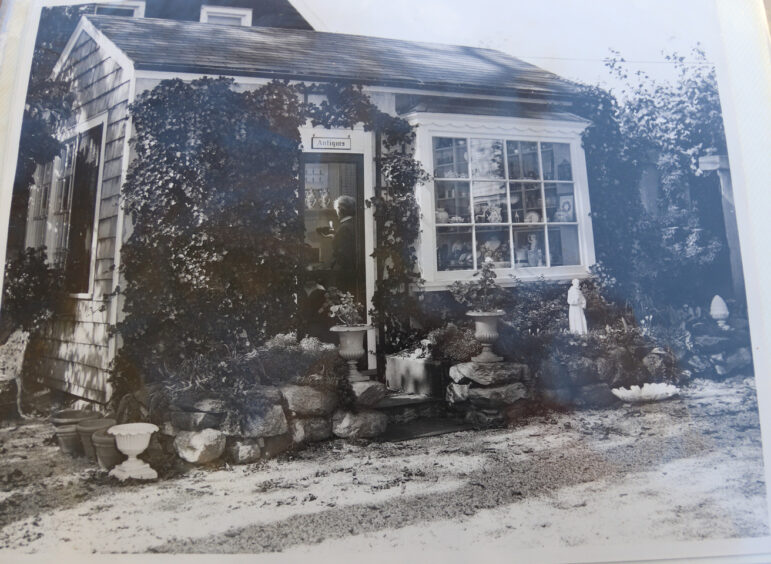The Greenwich Exchange for Women’s Work is celebrating 120 years of service this year, and on Thursday they hosted an event to mark the anniversary.
It was a lovely mild afternoon as friends and customers gathered in the private courtyard garden behind the shop at 28 Sherwood Place to celebrate.
Guests enjoyed a lovely spread of sandwiches and pastries, and shoppers were treated to a goodie bag of mouth watering caramels.
Guests perused several rooms in the main house bursting with handmade children’s items including knitted hats and sweaters, hand smocked dresses, pajamas, mittens, toys and bibs. Other rooms feature displays of antiques, women’s clothing, accessories and jewelry. Across the charming pebbled courtyard guests visited the Antiques Cottage which is transitioning over to a holiday theme.
The Exchange is a non-profit 501c (3) organization, and is run by a volunteer board of directors who also volunteer year-round in the shop.
The Exchange serves consignors as a marketplace for fine handiwork, food specialties, and unusual gifts.
Since its inception, the Exchange’s mission is to support the art of hand crafted items and to provide a marketplace for over 200 talented artisans and consignors who create thoughtful, modestly priced, one-of-a-kind gifts.
At one time, there were almost 100 Exchanges across the country, each with its own personality, merchandise and location, but each seeking to help others to help themselves.
In addition to scoring a unique gift, people who shop at a Woman’s Exchange help a consignor to achieve economic stability and an Exchange to remain a viable business outlet for consignors and selected vendors.


The Greenwich Exchange first opened in 1901 and moved to various downtown locations until 1937 when it settled in its present home at 28 Sherwood Place.
In 1934, the Greenwich Exchange became one of the six charter members, (and the only remaining founding member) of the Federation of Women’s Exchanges which meets annually. Delegates from coast to coast get together to share information, crafters and ideas as well as an overall sense of fellowship.
In 1832, Elizabeth Stott and 16 benevolent associates started the Philadelphia Ladies Depository Association to help women of diverse backgrounds, from wealthy widows who suddenly found themselves with no family income, to poor women whose families needed the added income for food and shelter. The Association allowed these women to support themselves and their families by selling valuable possessions or arts and crafts of their own creation.
Similar shops began opening across the country. At a time when there were few opportunities for women, many worked in factories for long hours in order to supplement their family incomes. Eventually women in more than 70 cities from Brooklyn to New Orleans to San Diego sold their merchandise on consignment and for a profit.
Today there are 16 Exchanges remaining across the United States. Brooklyn is the oldest, having opened in 1852. All the Exchanges are non-profit, all are unique, and all draw strength from one another.
Today, as always for women crafters, proceeds from their skilled handwork can bring financial independence, peace of mind and self-esteem.








